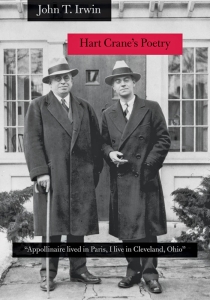by Dean Smith, Director, Project MUSE
One must be drenched in words, literally soaked in them, to have the right ones form themselves into the proper pattern at the right moment.
—Hart Crane
I first discovered the books of the Johns Hopkins University Press (JHUP) through a copy of When the Colts Belonged to Baltimore, by William Gildea, a sportswriter for the Washington Post and a Baltimorean like myself. Search engines, Facebook posts, and Twitter feeds didn’t play a role. 
It was 1996. Project MUSE was one year old. I thought to myself that any press publishing a book on my beloved Colts would be a great place to work. The cover featured Johnny Unitas rearing back and launching a bomb downfield. He was a bow-legged kid with big ideas and he helped put a soot-covered harbor town on the map.
Fifteen years later, I’m part of this dynamic organization as the director of Project MUSE and playing a role in the Press’s digital evolution. I didn’t know that our country’s oldest university press was also a recognized leader among publishers—that it had accomplished and executed “big ideas” for more than a century in its quest to “enlighten a diverse audience of readers.”
Press Director Kathleen Keane, Marketing Director Becky Clark, and I met in May of 2010 and talked about providing an e-books service through Project MUSE for the Press’s HFS distribution clients and MUSE publishers. The subject had been raised before. Our goal was to expand and enrich the research experience on Project MUSE by integrating journal articles and book chapters through a single search interface.
Inventing an e-books platform presented the Press with another leadership opportunity—to help save the scholarly monograph from extinction as the costs of print book publishing continue to increase in the face of diminishing sales.
We signed 28 publishers and identified 400 titles to be included in Project MUSE Editions.
Other initiatives were in the works. A group of university press directors had received a Mellon grant to explore the viability of e-books on behalf of the university press community. The University Press eBook Consortium (UPeC) was looking for a partner to provide functionality and host a potentially large collection of 20,000 e-books.
Then we had a big idea. We looked downfield like John Unitas and saw the potential of joining forces with UPeC and transforming the scholarly publishing landscape with an approach that was by the academic community and for the academic community.

Together, we created the University Press Content Consortium. Today, UPCC has launched with 66 publishers and 15,000 titles.
In many cases, the e-book collections were shaped to fit closely with MUSE’s strengths in journal content, with publishers specifically targeted for their excellence in certain subjects. We asked for Asian studies books from University of Hawai’i Press and University of Washington. We worked closely with Indiana and Ohio to curate a rich African studies list. Deep content in theater and performance studies was brought together from Michigan and Southern Illinois. Indiana and SUNY were tapped for their distinguished titles in philosophy, religion, and Jewish studies.
UPCC also features high-quality scholarship from JHUP.
For example, distinguished Hopkins Professor John Irwin writes in his highly acclaimed 2011 book Hart Crane’s Poetry that “this reading of Crane’s work aims to show . . . that The Bridge is the best twentieth-century long poem in English and
that it is the best not by a little but by a lot.”
Eliot’s Waste Land notwithstanding, that’s a big statement from a literary giant.
Irwin and Crane are together on Project MUSE and discoverable for generations of poets encountering this poetry for the first time.


